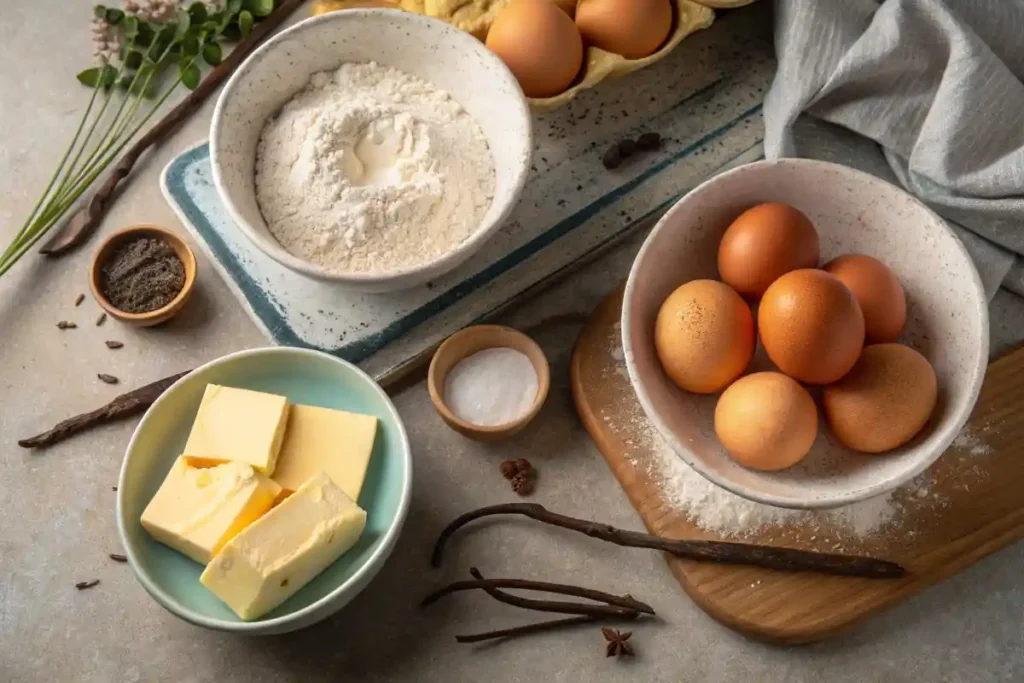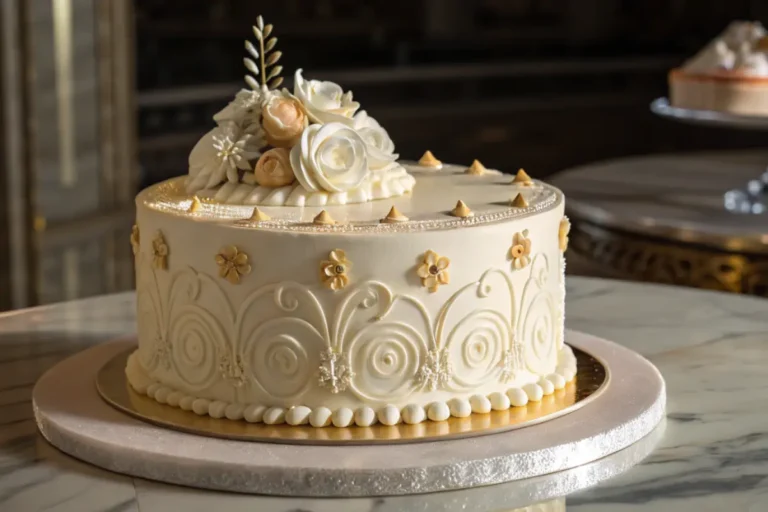Introduction
What is the world’s most famous cake? This question has intrigued dessert lovers and culinary enthusiasts around the globe for decades. In this article, we explore the story behind the cake that has captured hearts, taste buds, and imaginations worldwide. Our guide is designed especially for U.S. audiences who appreciate rich culinary traditions and delicious recipes.
1. An Engaging Introduction to the World’s Most Famous Cake
The world of cakes is as diverse as it is delightful. When asking, “What is the world’s most famous cake?” many might immediately think of the classic sponge cakes, indulgent chocolate layers, or even celebratory carrot cakes. But this article takes you on a journey through time, culture, and culinary artistry to reveal the cake that has become synonymous with celebration and elegance worldwide.
Whether you are a seasoned baker or someone who simply enjoys savoring a slice of history, our comprehensive guide offers insights into the origins, ingredients, and techniques that have made this cake iconic. Get ready to immerse yourself in a story filled with tradition, innovation, and pure delight!
2. History and Origins of the World’s Most Famous Cake
The journey to discovering what is the world’s most famous cake begins with a rich tapestry of history. Cakes have evolved over centuries, transcending cultural and geographic boundaries. In many cultures, the cake is not just a dessert—it is a symbol of celebration, love, and unity.
The Early Beginnings of Cake Making
The history of cake making can be traced back to ancient civilizations where early versions of cakes were prepared using simple ingredients such as grains, honey, and fruits. These early treats were far from the elaborate confections we see today, but they set the stage for the evolution of cake artistry.
During medieval times, the concept of cake evolved with the introduction of refined sugar and new baking techniques. European bakers began experimenting with spices, dried fruits, and elaborate decorations, turning cakes into coveted centerpieces at feasts and celebrations.
Evolution into a Cultural Icon
Over time, cakes have taken on unique identities across different regions. In Europe, the intricate designs and layered constructions became a hallmark of opulent celebrations. Meanwhile, in America, the cake evolved into a symbol of festivity, marked by bold flavors and innovative recipes.
This evolution is closely tied to the migration of culinary traditions. Immigrants brought with them secret recipes and techniques that blended with local customs, resulting in the globally recognized cake that many regard as the world’s most famous cake today.
3. The Secret Behind the Recipe: Ingredients and Flavor Profiles
Understanding what makes the world’s most famous cake so beloved involves delving into its ingredients and flavor profiles. The magic of this cake lies in the perfect balance of simplicity and sophistication, combining traditional elements with modern twists.

Core Ingredients
The classic recipe typically includes high-quality flour, fresh eggs, butter, sugar, and natural flavorings. The choice of ingredients is critical as each component contributes to the cake’s light texture and rich taste. For instance, using European-style butter and free-range eggs can elevate the flavor to new heights.
Many bakers also add a hint of vanilla or almond extract, which imparts a subtle aroma and enhances the overall taste of the cake. Additionally, some recipes incorporate natural fruit purees or zests to add layers of flavor.
Modern Twists and Variations
While tradition is at the heart of the world’s most famous cake, modern variations have emerged to cater to evolving palates. Contemporary bakers experiment with ingredients such as dark chocolate, matcha, or even exotic spices like cardamom, which add a unique twist without straying too far from the classic recipe.
These innovative approaches have allowed the cake to remain relevant and continue captivating audiences, both young and old, across the globe.
4. Step-by-Step Instructions to Create the Perfect Cake
Creating the world’s most famous cake at home is a rewarding experience that blends art with science. Below is a detailed guide to help you bake this iconic dessert. Whether you’re an experienced baker or a novice, these instructions are designed for clarity and ease.
Preparation and Pre-Baking Steps
Before diving into the baking process, it’s essential to prepare all your ingredients and equipment. Begin by preheating your oven to the recommended temperature, typically around 350°F (175°C). Grease and line your baking pans to prevent the cake from sticking.
Measure out your ingredients carefully, as precision is key to achieving the perfect texture and flavor. Ensure that your eggs are at room temperature and that your butter is properly softened.
Mixing and Baking
Start by creaming the butter and sugar together until the mixture is light and fluffy. This step is crucial as it introduces air into the batter, giving the cake its characteristic lightness. Gradually beat in the eggs one at a time, ensuring each is fully incorporated.
Next, sift in the dry ingredients—flour, baking powder, and any other leavening agents. Fold these gently into the batter, taking care not to overmix, which can lead to a dense cake. Once the batter is smooth and uniform, pour it into the prepared pans.
Bake in the preheated oven for the specified time, usually around 25-35 minutes, until a toothpick inserted into the center comes out clean. Allow the cake to cool before applying any frosting or additional decorations.
Decorating the Cake
Decoration is where creativity meets tradition. Whether you opt for a classic buttercream frosting, a glossy ganache, or a light dusting of powdered sugar, the final touch elevates the cake’s appearance. For an extra special presentation, consider adding fresh fruits, edible flowers, or even a drizzle of fruit coulis.
5. Expert Tips and Creative Variations
Achieving perfection with the world’s most famous cake often comes down to attention to detail and creative experimentation. Below are some expert tips and exciting variations to try in your kitchen.
Baking Tips for Consistency and Flavor
Maintain a clean and organized workspace to ensure each step of the process is carried out smoothly. Always use fresh, high-quality ingredients, as they significantly impact the final taste and texture. Preheating your oven and ensuring all ingredients are at room temperature can prevent common baking mishaps.
For a fluffier cake, consider using cake flour instead of all-purpose flour. This substitution can create a lighter crumb and a more delicate flavor.
Exploring Flavor Variations
Once you master the classic recipe, you might want to experiment with different flavor profiles. Add citrus zest for a refreshing twist, or incorporate cocoa powder to create a chocolate version that still respects the traditional base.
Another interesting variation involves infusing the batter with spices like cinnamon or nutmeg, giving the cake a warm, comforting flavor ideal for fall and winter celebrations.
Serving Suggestions and Occasions
The world’s most famous cake is incredibly versatile and can be the star of many occasions. Serve it at birthday parties, anniversaries, or even as a delightful treat at afternoon tea gatherings. Pair the cake with a cup of freshly brewed coffee or a glass of chilled milk for a harmonious blend of flavors.
For those who love to experiment, try layering different flavored cakes with complementary frostings to create a multi-dimensional dessert experience. The beauty of this iconic cake is that it adapts to every celebration, making it a perennial favorite.
6. Cultural Impact and Global Influence
The appeal of what is the world’s most famous cake extends far beyond its delicious taste. This cake has become a cultural icon, symbolizing celebrations, unity, and the art of baking across diverse regions.
A Global Celebration of Taste
Across continents, this cake is celebrated in different forms. In Europe, it often graces the tables of royal feasts and elegant parties. In North America, its versatility has made it a staple at family gatherings and festive events. Each region adds its unique twist, creating a tapestry of flavors and techniques that honor local traditions while paying homage to the classic recipe.
Its global influence is evident in the way the cake has evolved. Regional adaptations incorporate local ingredients and flavors, making the cake a living example of culinary fusion. This dynamic evolution helps it maintain its status as the world’s most famous cake.
Stories and Anecdotes from Around the World
Bakers and food historians alike have shared countless stories about the cake’s impact on their lives. Many credit the cake with marking significant milestones, such as weddings, graduations, and other life celebrations. These personal anecdotes add a layer of sentiment to the cake’s rich history, connecting it with moments of joy and togetherness.
Such stories underscore the universal appeal of the cake and highlight how its timeless recipe continues to inspire and bring people together.
7. Frequently Asked Questions (FAQs) About the World’s Most Famous Cake
What is the most popular cake in the world?
The most popular cake in the world is often debated, but many experts agree that the classic sponge cake or Victoria sponge, celebrated for its light texture and simple elegance, holds this title. Its versatility and timeless appeal have made it a favorite across different cultures.
Which is the no. 1 flavour cake?
While preferences vary regionally, vanilla remains the no. 1 flavor cake for many dessert enthusiasts. Its subtle sweetness and adaptability make it a perfect base for numerous variations, from fruit fillings to rich, creamy frostings.
What is the rarest cake in the world?
The rarest cake in the world is often one that incorporates unique, hard-to-find ingredients or a recipe passed down through generations in a small community. These cakes are usually created on special occasions and rarely seen outside of their local contexts, making them a treasured culinary secret.
What is the oldest cake in the world?
The oldest cake in the world can be traced back to ancient civilizations where early forms of cakes were made with simple ingredients such as grains and honey. Over time, the art of cake-making evolved, and recipes were refined to create the elaborate confections we enjoy today.
Conclusion: Embracing the Legacy of the World’s Most Famous Cake
In exploring what is the world’s most famous cake, we have uncovered a rich tapestry of history, culture, and culinary artistry. From its ancient origins to the modern-day variations that continue to captivate dessert lovers, this cake stands as a symbol of celebration and creativity.
Whether you choose to recreate the classic recipe at home or explore its modern twists, remember that every slice tells a story of tradition, innovation, and shared joy. We invite you to try your hand at baking this iconic dessert and share your own experience with family and friends.
Your journey into the history and making of this legendary cake is not just about baking—it’s about connecting with a legacy that has sweetened countless celebrations across the globe.
So, what are you waiting for? Embrace the legacy, try out the recipe, and join the community of those who cherish the art of cake-making. Share your creations on social media, and let the world know how this famous cake has inspired your culinary adventures!

